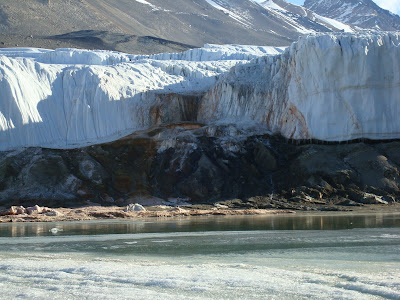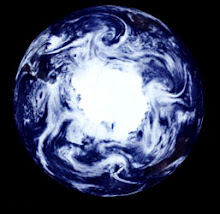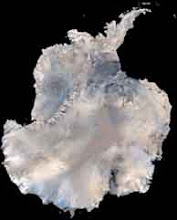
A solar eclipse occurs when the moon passes between the sun and the earth, potentially blocking out all sunlight and throwing parts of the earth into midday darkness. A partial solar eclipse occurred here in Antarctica just last week. The eclipse that we saw had 80% coverage, so the sun was not completely behind the moon. In America when partial eclipses occur you can look at the sun with special lenses or OMSI glasses and still observe the moon slowly creeping along in front of the sun. Depending on where you are and the percentage of the sun that is blocked, it may even still look like the sky is darkening.

The eclipse that we saw was very interesting. All of the scientists in Crary Lab went outside at around 4:20 in the afternoon and looked up at the sun with goggles and camera lenses as eye protection. (Remember that because we are so far south the sun was still very high in the sky, at 4pm the sun looks like it does at 11am in the States!)
Even though the eclipse was not total the sky did darken slightly, it looked like dusk was coming on, which after having the last month of 24 hour sunlight was quite a lot! But because there is so much snow and ice covering the ground in Antarctica the little sun that did shine through got reflected off the white ground and scarttered across McMurdo so that it still seemed bright to us.

Keep in mind that these pictures show the sun in a darkened sky because that is the only way the camera will produce a shot.


+008.JPG)






+001.JPG)










 The texture of the ice on each of the lakes is so different that it is almost possible to discern which lake you are on solely by looking down at the lake ice. Parts of Bonney and all of Chad are so glassy that you can see down to the rocks that scatter the bottom of the lakes. They also have hidden caves in the layers of ice, which make walking treacherous to the unaware, but which also turn the lake into a mysterious land of secret forts and hideaways.
The texture of the ice on each of the lakes is so different that it is almost possible to discern which lake you are on solely by looking down at the lake ice. Parts of Bonney and all of Chad are so glassy that you can see down to the rocks that scatter the bottom of the lakes. They also have hidden caves in the layers of ice, which make walking treacherous to the unaware, but which also turn the lake into a mysterious land of secret forts and hideaways. 
















+072.jpg)




 All of these things together lead scientists to believe that the changes in the lakes of the Dry Valleys are a good representation of the changes that could occur in our world if global warming continues.
All of these things together lead scientists to believe that the changes in the lakes of the Dry Valleys are a good representation of the changes that could occur in our world if global warming continues.+064.JPG)


